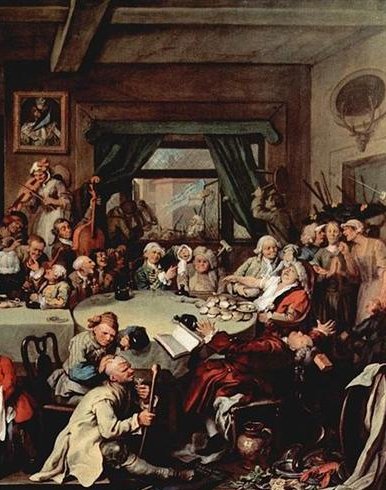Allen: "The Romans made much about it [Vega], for the beginning of their autumn was indicated by its morning setting. It was this star that, when the hour of its rising was alluded to, called forth Cicero's remark, 'Yes, if the edict allows it,' - a contemptous reference to Caesar's arbitrary, yet sensible, interference with the course of ancient time in the reformation of the calendar, an interference that occasioned as much dissatisfaction in his day as did Pope Gregory's reform¹ in the 16th century. ¹ The English refused to adopt this reform till 1752, when they abandoned the Old Style on the 2d of September, and made the succeeding day September 14th, New Style: a change, however, that 'was made under very great opposition, and there were violent riots in consequence in different parts of the country, especially in Bristol, where several persons were killed. The cry of the populace was 'Give us back our fortnight', for they supposed they had been robbed of eleven days." It is not difficult to associate to the robbery of fire from the sky in order to get fire down on the earth: .. It should be stated right now that 'fire' is actually a great circle reaching from the North Pole of the celestial sphere to its South Pole ... ... The Head of the Stag was appropriately hanging on the Wall above the Framework of the Door:
We could interpret this view as a description of how the Tines of the Stag once upon a time had been observed Shining above the Door to the New Year ... To repeat:
... The reform was adopted initially by the Catholic countries of Europe. Protestants and Eastern Orthodox countries continued to use the traditional Julian calendar and adopted the Gregorian reform after a time, for the sake of convenience in international trade. The last European country to adopt the reform was Greece, as late as 1923 ... Britain and the British Empire (including the eastern part of what is now the United States) adopted the Gregorian calendar in 1752, by which time it was necessary to correct by 11 days. Wednesday, 2 September 1752, was followed by Thursday, 14 September 1752. Claims that rioters demanded 'Give us our eleven days' grew out of a misinterpretation of a painting by William Hogarth ... ... The Julian calendar day Thursday, 4 October 1582 was followed by the first day of the Gregorian calendar, Friday, 15 October 1582 (the cycle of weekdays was not affected) ...
We must here consider a possible allusion to the last day of the Old Style: ... Hotu's canoe sailed from Maori to Te Pito O Te Kainga. It sailed on the second day of September (hora nui) ... [E:74] Maori could accordingly correspond to the Old Style. It was not a place down on earth but a place up in time-space (pacha). ... Space and time are a single, related concept in Runasimi [the language of the Inca people], represented by one word, pacha, which can also mean 'world' and 'universe'. The image of time familiar to Waman Puma was static and spatial: one could travel in time as one travels over earth - the structure, the geography, remaining unchanged ... Similarly, when the Sun King arrived to Easter Island the date Tangaroa Uri 15 could allude to the birth of the Gregorian calendar. ... The canoes of Ava Rei Pua and of Hotu were seen near the (off-shore) islets. On the fifteenth day of the month of October (tangaroa uri) the canoe of Hotu and the canoe of Ava Rei Pua landed ... [E:75]
|
||||||||||||||||||||||||||

